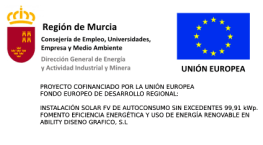Cookies policy
A cookie is a small text file that is stored in your browser when you visit almost any web page. Its usefulness is that the web is able to remember your visit when you return to browse that page. Cookies usually store information of a technical nature, personal preferences, content personalization, usage statistics, links to social networks, access to user accounts, etc. The purpose of the cookie is to adapt the content of the web to your profile and needs, without cookies the services offered by any page would be significantly reduced. If you wish to consult more information about what cookies are, what they store, how to eliminate them, deactivate them, etc., please contact us.
Cookies used on this website
Following the guidelines of the Spanish Data Protection Agency, we proceed to detail the use of cookies made by this website in order to inform you as accurately as possible.
This website uses the following own cookies:
Session cookies, to ensure that users who write comments on the blog are human and not automated applications. In this way spam is fought.
ABIPLEX.NET uses the following third-party cookies:
Google Analytics: It stores cookies to be able to compile statistics on the traffic and volume of visits to this website. By using this website you are consenting to the processing of information about you by Google. Therefore, the exercise of any right in this regard must be done by communicating directly with Google.
Social networks: Each social network uses its own cookies so that you can click on buttons such as Like or Share.
Deactivation or elimination of cookies
At any time you can exercise your right to deactivate or eliminate cookies from this website. These actions are performed differently depending on the browser you are using.
Additional notes
Neither this website nor its legal representatives are responsible for the content or the veracity of the privacy policies that the third parties mentioned in this cookie policy may have.
Web browsers are the tools in charge of storing cookies and from this place you must exercise your right to eliminate or deactivate them. Neither this website nor its legal representatives can guarantee the correct or incorrect handling of cookies by the aforementioned browsers.
In some cases it is necessary to install cookies so that the browser does not forget your decision not to accept them.
In the case of Google Analytics cookies, this company stores cookies on servers located in the United States and undertakes not to share them with third parties, except in cases where it is necessary for the operation of the system or when the law requires them to such an effect. According to Google, it does not save your IP address. Google Inc. is a company adhered to the Safe Harbor Agreement that guarantees that all transferred data will be treated with a level of protection in accordance with European regulations. You can consult detailed information in this regard at this link. If you want information about the use that Google gives to cookies, we attach this other link.
For any questions or queries about this cookie policy, do not hesitate to contact us through the contact section.















